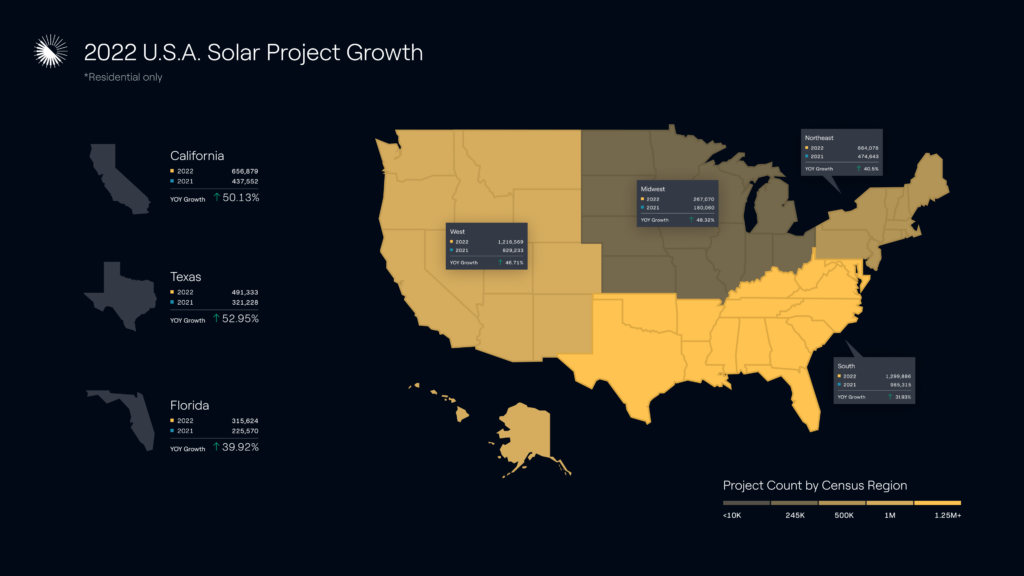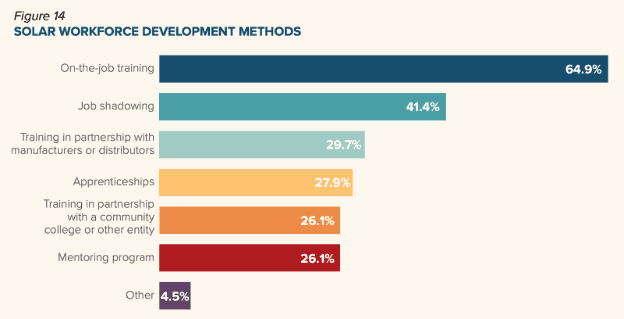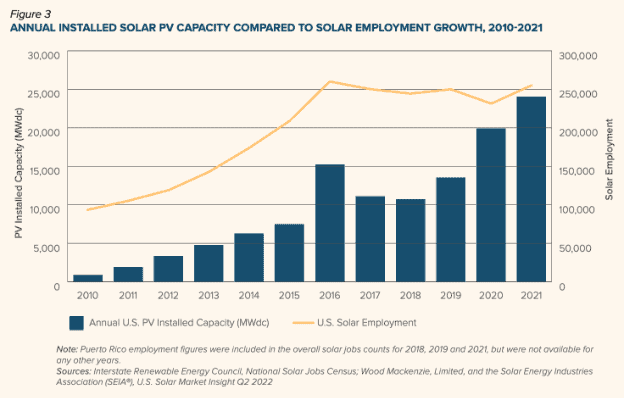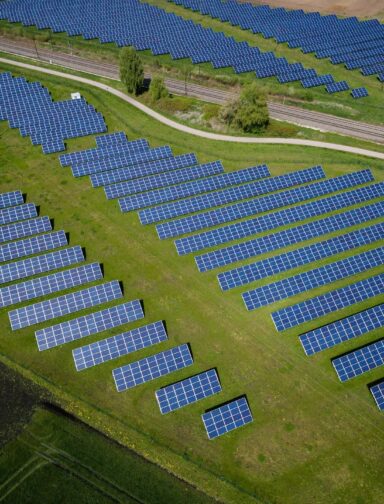We all have this feeling that the solar industry is growing. And we all know that — given the extensive benefits solar provides for homeowners, the environment, and workers in the industry — it should be growing. But despite tailwinds like the Inflation Reduction Act, there are potential roadblocks: high interest rates, an uncertain economy, and unfavorable policies like California’s NEM 3.0.
Where does the solar industry stand? How are installers feeling? What do homeowners want? What does solar’s future look like?
We wanted some answers to these questions, and more. And we wanted data behind these answers to help us plan, to help us serve customers better, and ultimately, to help continue driving our mission of a solar future for all. So, we surveyed hundreds of solar installers and homeowners, and used our own information from over 6 million installs in our software. The result is our inaugural Solar Industry Snapshot.
We think installers will find it useful, as well. So, in this blog series we’ll dive into the data from the report to not only get a better idea of where solar is now, but where homeowners and installers want to take it in the future.
To set the stage, let’s look at the overall state of the solar industry.
Solar installs through the roof (literally)
The overall takeaway is that solar continues to grow — rapidly. While in any short term window, the market can very much resemble a “solarcoaster”, in the long term it’s more like a rocketship. And 2022 was very much one of the “up” years.
Every single US region showed exceptional growth, according to Aurora’s residential project counts.

Installers on roofs
With such high demand for residential solar, it’s no surprise that individual solar installers reported strong growth. It starts with overall solar demand: More than 90% of respondents have seen increased interest in solar over the past year.
It makes sense, then, that almost 70% of installers in the Snapshot indicated that their company had grown in size over the past year, with less than 5% saying their company had decreased in size. Given the economic uncertainty of the recent past, this is a truly astounding number.
What’s holding solar companies back from even more growth? Finding qualified workers. 17% of solar installers said their biggest challenge was the “struggle to increase employee headcount due to lack of qualified candidates”.
That leads us to the solar jobs market as a whole. Spoiler alert, if you’re looking to change careers, the solar industry has a place for you.

The solar jobs market: Strong to quite strong
Don’t let fossil energy propaganda fool you: Solar contributes substantially to the US economy through job creation and career development, is adding jobs faster than the rest of the economy, and employs more people than most other energy sectors. Add to that the fact that solar offers meaningful jobs with living wages — often with no college degree required — and it’s clear that the solar industry is creating economic opportunity both on an individual level for workers and for the US economy more broadly.
According to the Interstate Renewable Energy Council (IREC)’s 2021 National Solar Job Census, all 50 states, Puerto Rico, and Washington DC have experienced solar energy job growth over the last 10 years. With 255,000 United States workers in 2021, careers in renewable energy continue to launch and advance for thousands of Americans every year.
Sustaining this growth since the beginning of the decade, new solar energy jobs contributed immensely to the US economy both during and after the COVID-19 pandemic. As Larry Sherwood, President and CEO of IREC stated, “America’s solar industry came back strong from the pandemic to expand the clean energy workforce across all regions of the country.”
With less than one-third of industry jobs requiring a bachelor’s degree, solar energy can create a career path in a wide variety of fields including manufacturing, sales, distribution, and construction. When weighed against other energy industry jobs, solar employs twice as many workers as coal, ranking third in total employment behind petroleum and natural gas.

To help new workers succeed in their positions, almost 65% of solar companies surveyed in the 2021 census reported on-the-job training, with 41% offering job shadowing, and nearly 28% maintaining apprenticeship programs.
Looking ahead
Published in July of 2022, the IREC’s Solar Jobs Census includes insights from the Solar Energy Industries Association (SEIA) that predict the ITC and other incentives will drive nearly 700 GW of new solar capacity installed in the United States by 2032.
Equal to 700,000 MW, 700 GW provides enough capacity to power approximately 121 million homes, using an average of 173 homes per MW in 2022.

And that was before the Inflation Reduction Act of 2022. Hailed as the largest investment in climate resilience and energy independence in American history, it extended the 30% Investment Tax Credit (ITC) through 2033, and it will likely increase the already strong demand for residential and commercial solar into the next decade.
The solar installers we surveyed seem to agree, with more than 45% saying they have seen increased interest in solar thanks to the IRA, and another 40% expecting to see increased interest in the future.

How do installers make sure this predicted growth comes true?
What are customers looking for when going solar? How can installers make sure homeowners understand the benefits of solar, especially with the IRA, NEM 3.0, and other policies?
These questions, and more, are at the heart of the Solar Industry Snapshot, and this blog series. In our next post we’ll look deeper into what’s driving homeowners to go solar, and what installers can do to cater to those needs.
In the meantime, be sure to check out the entire Solar Industry Snapshot to have all the data at your fingertips.
Have specific questions you want answered right now? Click the box in the bottom right of the screen to chat with one of our experts, or schedule a quick demo.
Featured image by Evgeniy Alyoshin.


